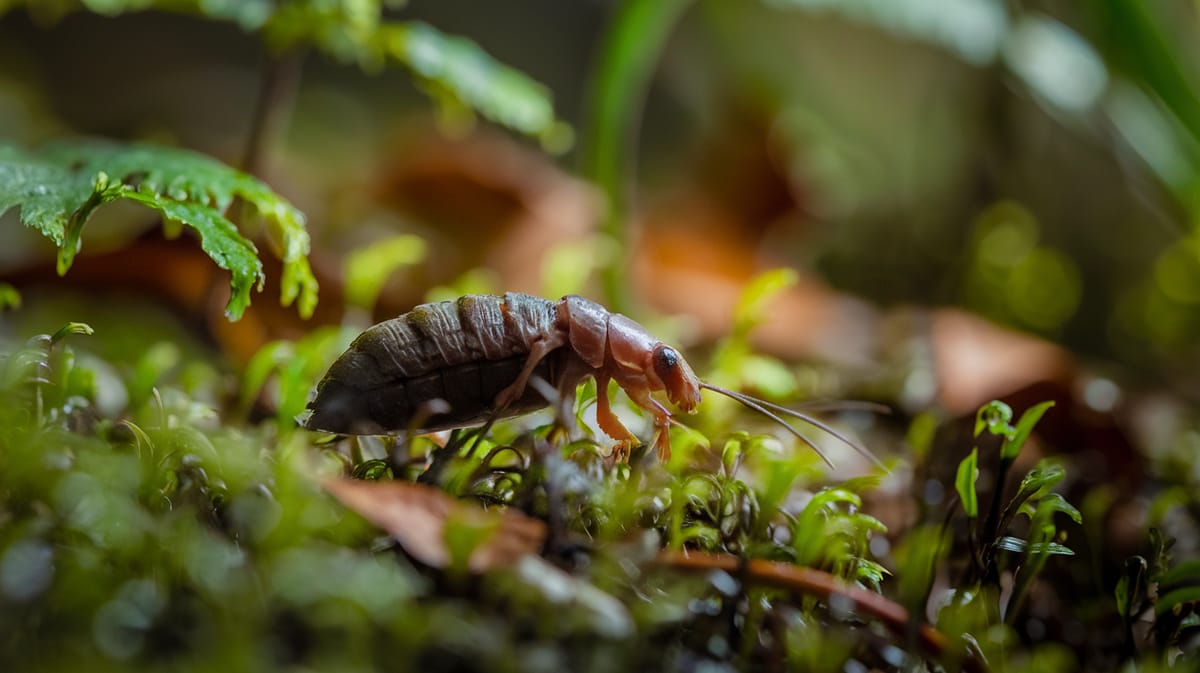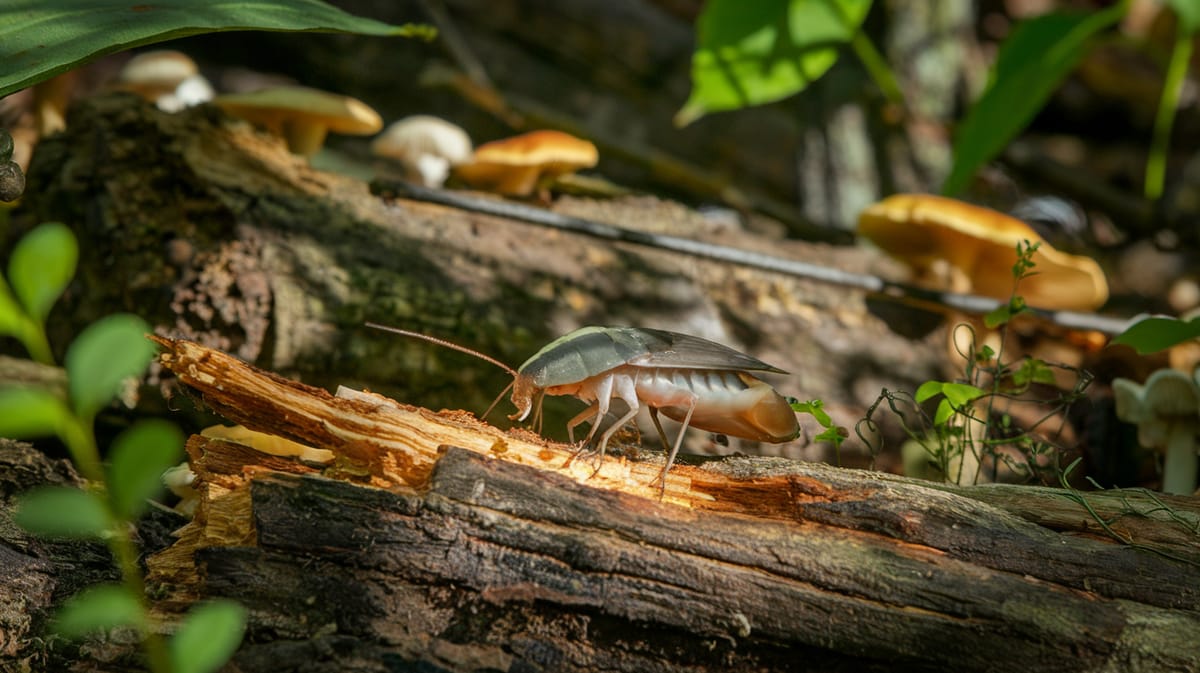Woodlouse
Silent recyclers of the forest floor, woodlice thrive in damp environments, breaking down organic matter and enriching soil. Their nocturnal lifestyle helps maintain ecological balance.

Key Insights at a Glance
Did You Know?
Taxonomy & Classification
Woodlice are terrestrial crustaceans adapted for life on land, featuring segmented bodies and nocturnal habits, crucial for nutrient recycling in ecosystems. Let's understand the evolutionary journey and classification of these remarkable decomposers.
Global Diversity
Over 3,500 species of woodlice are distributed globally, thriving in diverse habitats from woodlands to urban areas.
Ancient Survivors
Originating 300 million years ago, woodlice have adapted through significant climatic shifts, showcasing their resilience and evolutionary success.
Lifecycle and Growth
A remarkable journey of transformation from Egg to Adult.
Egg
Eggs develop within the marsupial pouch of the female, receiving moisture and protection until they hatch into juveniles.
Juvenile
Juveniles resemble smaller adults and undergo several molts, gradually growing and developing their exoskeleton.
Adult
Adults are fully developed, engage in reproduction, and continue to molt periodically, maintaining their exoskeleton.
Dietary Habits
A decomposer thriving on decaying plant matter, this insect plays a vital role in recycling nutrients within ecosystems.
| DIET TYPE | DESCRIPTION |
|---|---|
| Primary Diet | Primarily feeds on decomposing leaves, wood, and other organic plant materials found on the forest floor. |
| Secondary Diet | Occasionally consumes fungi, lichens, and algae, supplementing its diet with these additional resources when available. |
| Occasional | Rarely ingests small invertebrates or animal remains, showcasing its adaptability to available resources during scarcity. |

Behaviour and Adaptations
Discover the fascinating traits that enable the Woodlouse to thrive in diverse habitats.
Moisture Retention
Woodlice have adapted to minimize water loss, essential for surviving in dry environments.
Defensive Curling
When threatened, woodlice curl into a ball to protect their soft underside.
Detritivore Diet
Feeding on decaying organic matter, they play a crucial role in nutrient cycling.
Ecosystem Impact
Woodlice play a crucial role in maintaining ecological balance by recycling nutrients and enhancing soil health.
Soil Aerators
Their burrowing activity helps improve soil structure and aeration.
Organic Matter Decomposers
Woodlice break down dead plant material, returning nutrients to the soil.
Calcium Providers
They contribute calcium through their exoskeletons, enriching the soil.
Conservation Challenges
Understanding and addressing the major threats to Woodlouse populations.
Habitat Destruction
Urban development reduces natural habitats, affecting woodlouse populations.
Pesticide Exposure
Widespread pesticide use harms woodlouse populations.
Climate Change
Altered weather patterns disrupt woodlouse habitats and lifecycles.
Frequently Asked Questions
How long do Woodlouse live?
Woodlice typically live for about two years. Under optimal conditions, they can sometimes survive up to four years. Their lifespan depends on factors like habitat, climate, and availability of food.
What do Woodlouse eat?
Woodlice primarily feed on decaying plant material, such as fallen leaves and rotting wood. They play an essential role in breaking down organic matter, contributing to nutrient cycling in ecosystems. Occasionally, they might consume living plants, fungi, or algae.
Are Woodlouse poisonous?
Woodlice are not poisonous. They pose no threat to humans or pets, as they do not produce toxins or harmful substances. Their primary defense mechanism is curling into a ball when threatened.
Are Woodlouse endangered?
Woodlice are not considered endangered. They are widespread and thrive in various habitats worldwide, including gardens, forests, and urban areas. While specific species might face localized threats, the overall population is stable.
What do Woodlouse symbolize?
Woodlice often symbolize adaptability and resilience due to their ability to thrive in diverse environments. In some cultures, they are seen as symbols of transformation and renewal, reflecting their role in decomposition and nutrient recycling.
Do Woodlouse bite?
Woodlice do not bite humans. They have no means to inflict harm and prefer to avoid contact by hiding or rolling into a ball when disturbed.
What color are Woodlouse?
Woodlice are usually grey or brown, which helps them blend into their environments. Some species might exhibit colors like purple or bluish-grey. Their coloring can vary slightly based on habitat and species.
Does a Woodlouse have wings?
Woodlice do not have wings. They belong to the crustacean group, related to shrimp and crabs, and are adapted to living on land without the need for flight.
What does a Woodlouse look like?
Woodlice have a segmented, oval-shaped body covered by a hard exoskeleton. They have seven pairs of legs and two antennae. Their appearance is often likened to an armored pill or a small, flattened bug.
Is a Woodlouse an insect?
A woodlouse is not an insect. It is a crustacean, part of the order Isopoda. Unlike insects, woodlice have more than three pairs of legs and lack wings, distinguishing them within the arthropod family.
Related Insects
Discover insects with similar characteristics to Woodlouse - including shared habitats, diets, and taxonomic classifications
Share this profile
Help others discover Woodlouse
